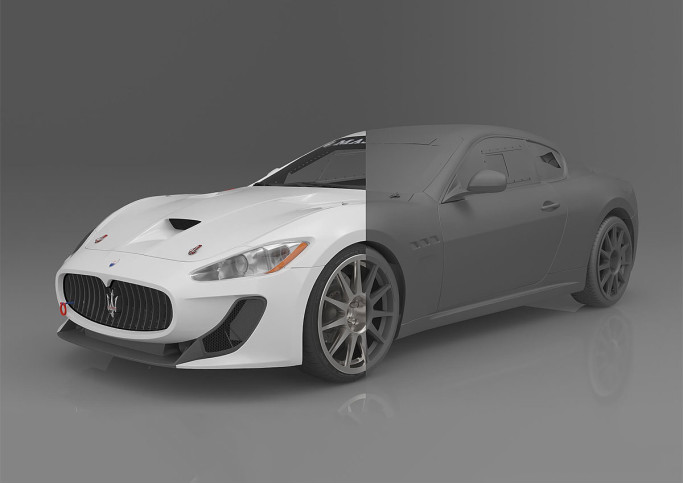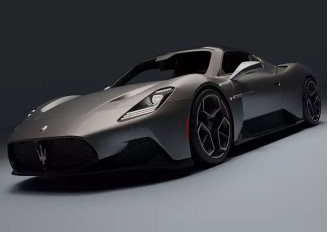3D Printing and Restoration of Spare Parts for Vintage Maserati
Content
- 1 How 3D Printing Is Changing the Approach to Auto Parts Manufacturing
- 2 Limitless Personalization
- 3 From Idea to Prototype in Days
- 4 Rare Parts Are No Longer a Problem
- 5 Restoring Components: Where Classic Meets Innovation
- 6 Materials and Quality: On Par with the Original
- 7 Unique Parts — New Opportunities
- 8 How 3D Parts for Maserati Are Made: Step-by-Step Process
- 9 3D Printing Technologies: How Maserati Parts Are Recreated
- 10 What Can Be Printed?
- 11 Which Technologies Are Used?
- 12 Parts That Require No Fitting
- 13 What to Consider Before Ordering?
- 14 Types of 3D Printing
- 15 Why Choose 3D Printing for Maserati Restoration?
- 16 Conclusion
How 3D Printing Is Changing the Approach to Auto Parts Manufacturing
Classic Maseratis are more than just cars—they're true works of art. Owners of these retro models often face the same issue: where to find a missing or worn-out part that has long been discontinued? This is where 3D printing steps in. Modern technologies are confidently entering the automotive industry, and 3D printing is a vivid example. For owners of vintage Maseratis and enthusiasts seeking custom solutions, it’s a real breakthrough. It’s not only about saving time, but also about turning the boldest ideas into reality.
Limitless Personalization
Thanks to 3D printing, it’s possible to create parts that precisely match individual requirements. Instrument panels, interior elements, air vents—all of this can be printed based on the owner's preferences. This is especially relevant for exclusive Maserati models, where even the smallest detail matters to maintain the car’s harmony.
This is particularly important for those restoring rare Maserati models—like the first-generation Ghibli or the Sebring. Unique shapes, design curves, and complex mechanical components can now be reproduced with exact precision.
From Idea to Prototype in Days
Before mass production, manufacturers can quickly produce a physical model of a new part. This allows for testing, ergonomic evaluation, geometry checks, and adjustments. Not long ago, this took weeks—today, it’s a matter of days.
For Maserati, where precision and balance are critically important, the ability to quickly evaluate a prototype is immensely valuable.
Rare Parts Are No Longer a Problem
The most valuable aspect of 3D printing is its ability to reproduce components that have long been discontinued or are nearly impossible to find on the market. If you have a digital model or even a damaged original—it can be scanned, digitized, and restored. This opens enormous opportunities for owners of classic Maseratis who are missing specific parts.
Even if the original is no longer available, digital design allows the part to be "brought back to life"—sometimes even improving its properties.
Restoring Components: Where Classic Meets Innovation
Restoration is no longer limited to flea market hunts or ordering parts from across the globe. 3D printing makes the once-unthinkable possible: printing body parts, interior components, or even mechanical systems.
For Maserati, it’s a true breakthrough. Parts that cannot be found from the manufacturer or official dealer can be recreated with millimeter-level accuracy—while preserving authenticity.
Materials and Quality: On Par with the Original
Modern polymers, metal powders, and composites make it possible to produce parts with high strength, temperature resistance, and corrosion resistance. In some cases, these materials even outperform those used in the original manufacturing process.
For Maserati enthusiasts, this means one thing: the restored vehicle will not only look authentic, but it will also perform reliably, maintaining the same quality and driving experience these cars are known for.
Unique Parts — New Opportunities
Sometimes, 3D printing offers more than just replication. It’s a chance to improve the original. For example, if a part proved fragile or prone to failure, it can be upgraded—maintaining its authentic appearance while modifying the internal structure.
This kind of adaptation is especially valuable for those who not only exhibit their Maseratis but also enjoy driving them on the road.
How 3D Parts for Maserati Are Made: Step-by-Step Process
Today, 3D printing opens up entirely new possibilities for restoring rare and unique components—especially for classic Maserati models. The process of creating such parts goes through several clearly defined stages, each crucial to the accuracy, quality, and authenticity of the final result.
- Initial Consultation and Requirement Gathering
Before getting started, it's essential to understand exactly which part needs to be made. This is the discussion phase: the client provides all necessary information—dimensions, shape, and functional purpose. For Maseratis, this could be anything from a decorative panel to a complex technical component, where precision is critical. - Digital Reconstruction: Creating the 3D Model
Once all data is collected, specialists begin the modeling process. Using CAD systems, a digital replica is created that accurately matches all technical parameters. This file is the foundation for the future print, and any error here can be costly—especially when dealing with Maserati components. - Material Selection: More Than Just Plastic
Different tasks require different materials: plastic, metal powders, composites. For example, parts under the hood of a Maserati typically require heat-resistant or reinforced materials capable of withstanding stress and high temperatures. - Direct Printing: Bringing the Part to Life
The digital model is uploaded into the 3D printer—and the printing process begins. Depending on the complexity of the part, it can take anywhere from a few hours to a full day. This high-precision process allows even the smallest design elements of a Maserati to be reproduced in stunning detail. - Post-Processing: Finishing and Smoothing
The finished part always undergoes post-processing. Support structures are removed, and the component is sanded, polished, painted, or coated. Everything is done to ensure the part looks perfect and is fully ready for installation in the Maserati body. - Quality Control: Testing and Verification
The final—but no less important—step is inspection. The finished part goes through a series of tests for strength, accuracy, and functionality. Especially when it comes to moving mechanisms or safety-critical components, this step is essential for any Maserati model.
3D Printing Technologies: How Maserati Parts Are Recreated
In the world of vintage car restoration, particularly Maserati models, every detail matters. Sometimes, the absence of even the smallest component can halt the entire process. This is where modern 3D printing technologies come into play—a tool that allows for the restoration of exclusive parts with maximum precision.
What Can Be Printed?
Today, additive manufacturing is used to produce:
- washers and gaskets
- fluid reservoirs
- dashboard components
- guides and caps
- housings and decorative elements
This is the perfect way to recreate rare Maserati components that are no longer in production.
Which Technologies Are Used?
After creating a digital model (manually or via 3D scanning), specialists choose the appropriate printing technology based on the part’s requirements and operating conditions.
Laser Sintering (SLS)
A powdered material (sometimes with elastic additives like rubber) is heated to a semi-liquid state, and then a laser forms the part. This is a high-precision technology suitable for complex assemblies and mechanically stressed body components.
SLA / DLP — Photopolymer Printing
Maserati parts are created by curing liquid resin under ultraviolet light. The result is ultra-precise, smooth, and highly detailed products. This is ideal for interior elements and decorative inserts for Maserati models.
FDM — Classic Layered Deposition
The most popular method, enabling the quick production of parts using ABS, PLA, PET, or composites. This is a cost-effective option for small-batch manufacturing or prototyping.
Parts That Require No Fitting
Thanks to the high precision of 3D printers (up to 0.01 mm), most printed parts require no additional sanding or fitting. For Maserati, this is crucial—everything must align down to the millimeter.
What to Consider Before Ordering?
-
Infill Density
The more infill, the stronger the part—but also the more expensive. Partial infill reduces cost and weight, so for decorative or non-load-bearing Maserati elements, 15–30% is usually sufficient. -
Presence of Overhanging Elements
If the model has unsupported sections (such as protrusions or cutouts), supports are required. These increase both print time and cost, and after removal, they may leave marks. -
Wall Thickness
For aesthetic components, 0.8 mm walls are sufficient. For structural parts—at least 1.2 mm. For instance, if you want to print a coolant reservoir for a Maserati, the wall must withstand pressure and temperature—so a strength margin is essential.
Types of 3D Printing
FDM Printing (0.1–0.3 mm layers)
- Print volume up to 600×600×600 mm
- Materials: PLA, ABS, FLEX, PET, PC, and others
SLA / DLP Printing (12–50 microns layers)
- Volume up to 215×135×200 mm
- Material: photopolymer resin
Why Choose 3D Printing for Maserati Restoration?
- Fast Production
Instead of waiting weeks or months—just a few days from the model to the finished part. - Flexibility and Customization
The design can be tailored to a specific Maserati model or even custom components based on the owner's preferences. - Resource Efficiency
Especially cost-effective for producing single or rare parts—less waste, more value. - Form and Weight Optimization
3D printing allows for structural adjustments to improve aerodynamics, weight, or strength—without compromising the design.
Conclusion
3D printing is not just a technology, but a key to preserving unique vehicles like Maserati. It allows not only the recreation of lost parts but also the enhancement of originals while maintaining the character and elegance of classic models. For true enthusiasts, it’s a path that unites the future with history. Today, restoring classic Maseratis no longer depends on the availability of original parts. If a part is lost or damaged, it can be recreated from scratch. These technologies allow for not only preserving aesthetics but also improving functionality, strength, and durability.










